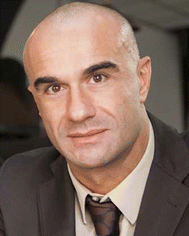Biomolecular crystal engineering
Claudia
Pigliacelli
and
Pierangelo
Metrangolo
Laboratory of Supramolecular and BioNano Materials (SupraBioNanoLab), Department of Chemistry, Materials, and Chemical Engineering “Giulio Natta”, Politecnico di Milano, Via Luigi Mancinelli 7, 20131 Milan, Italy. E-mail: claudia.pigliacelli@polimi.it; pierangelo.metrangolo@polimi.it
 Claudia Pigliacelli |
 Pierangelo Metrangolo |
Crystallization is commonplace in nature, where the formation of minerals and crystals in specific microenvironments is finely tuned by cells and specialized biomacromolecules. Much effort is invested in understanding the pathways leading to biomolecules' crystal formation, gaining control over the crystallization process, and tuning the fundamental features of the resulting crystalline species.
The Biomolecular crystal engineering themed collection features recent work covering several aspects of crystallization processes involving biomolecules, from the production of single crystals up to their applications as materials in several high-end fields, ranging from catalysis to nanomedicine.
Growing crystals from proteins and peptides is frequently an essential step to gain access to structural information on these biomolecules, but, although useful, it remains highly challenging. In their manuscript, Heng et al. reveal the ability of selected amino acids to aid the crystallization of insulin, a strategy that could be general and employable for other proteins (https://doi.org/10.1039/D1CE00026H). dos Santos et al. propose magnetic nanoparticles (NPs), coated with affinity ligands to target specific proteins, as functional additives able to act as tailor-made crystallization inducers (https://doi.org/10.1039/D0CE01529F). The use of nanoparticles as valuable additives was also studied by Choe et al., who utilized sphere-, star-, and rod-shaped gold nanoparticles (GNPs) functionalized with nitrilotriacetic acid or citrate as nucleation cores and showed that the GNPs could facilitate nucleation by interacting with His6-tagged proteins (https://doi.org/10.1039/C9CE01786K).
Li et al. probed, via the hanging-drop method, the influence of trifluoro-containing pesticides on the phase transitions of lysozyme in solution, proving that small amounts of pesticides can lead to interactions strong enough to influence the aggregation and nucleation of the protein (https://doi.org/10.1039/D1CE00108F). The use of air bubbles as heterogeneous surfaces, to facilitate the critical nucleus formation of large protein molecules, was instead studied by Yang et al., who showed how the introduction of an air bubble template results in an overall reduction in the nucleation induction time (https://doi.org/10.1039/D1CE01034D). Finally, Imai et al. probed the evolution of biomineral regularity employing fluorapatite as a model. Their study demonstrates the structural evolution from a single crystal to mesocrystals through lateral and vertical miniaturization (https://doi.org/10.1039/D2CE00657J).
Pizzi et al. contribute to the collection by reporting on a computational method, based on coarse-grained molecular dynamics (CG-MD), used to screen and forecast the possible crystallinity of a pentapeptide series derived from the amyloidogenic sequence DFNKF. The applied computational model was validated by selecting a limited number of peptide sequences, which were then synthesized and experimentally studied, confirming the reported approach as a valuable strategy to identify self-assembling and crystalline peptide sequences (https://doi.org/10.1039/D3CE00495C). Although historically considered unfavorable to protein crystallization, Yin et al. studied the effect of impurities, revealing, in their work, how protein crystallization could be promoted with a low concentration of impurities and inhibited with a high concentration of impurities (https://doi.org/10.1039/D1CE01535D).
An innovative approach for controlling the formation of protein crystals is described by Budayova-Spano et al., who developed an on-chip dialysis crystallization platform, named MycroCrys. The device combines a dialysis chip with the microfluidic technology, allowing minute sample consumption, as well as precise control over the crystallization kinetic pathway. MycroCrys was tested with two model soluble proteins, proving its ability to control the growth of high-quality crystals (https://doi.org/10.1039/d3ce00466j)
Calcium minerals are among the most common biominerals found in nature and calcium carbonate represents an important model system to study biomineralization and bioinspired mineralization processes. In this framework, the article by Song et al. reports on the in vitro crystallization of calcium carbonate mediated by proteins extracted from P. placenta shells (https://doi.org/10.1039/D2CE00692H). Magnabosco et al. uncovered the effects of calcein, a fluorescent marker commonly used to assess mineral growth in calcifying organisms, on calcium carbonate polymorphs, proving that calcein is entrapped within calcite and aragonite and modifies the shape and morphology of both polymorphs (https://doi.org/10.1039/C8CE00853A). Degli Esposti et al. describe, instead, the in situ formation and growth of calcium phosphate NPs in the presence of calcium-binding dicarboxylate molecules at several reaction temperatures through simultaneous SAXS/WAXS using synchrotron light (https://doi.org/10.1039/D2CE01227H).
Biomineralization-inspired crystallization methods can also be an effective design strategy to obtain functional hybrid materials. An example of such a possibility is provided by the work of Kato et al., who developed biomineralization-inspired hybrids based on β-chitin and zinc hydroxide and their conversion into zinc oxide thin films via thermal treatment (https://doi.org/10.1039/C9CE00141G). Last, the article by Cölfen et al. describes the cementation of quartz sand grains via mineralization of a calcium carbonate coating layer, obtaining a continuous calcium carbonate coating composed of hierarchically structured calcite subunits of 20 to 30 nm in size (https://doi.org/10.1039/C8CE02158A).
This themed collection provides an overview of the recent discoveries and development in the field of biomolecular crystal engineering, highlighting the relevant role of this research topic in both crystals and materials design. Finally, we thank all the researchers contributing to this themed collection, the reviewers for their time and work, and the CrystEngComm editorial office for their support.
| This journal is © The Royal Society of Chemistry 2023 |
